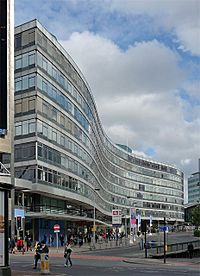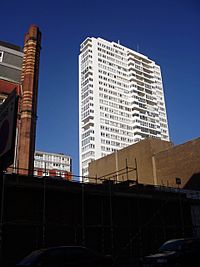Richard Seifert facts for kids
Quick facts for kids
Reubin "Richard" Seifert
|
|
|---|---|
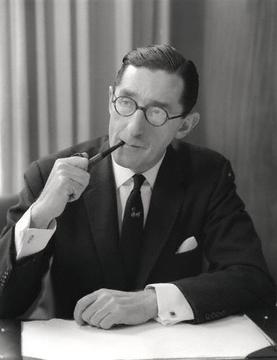 |
|
| Born | 25 November 1910 Zurich, Switzerland
|
| Died | 26 October 2001 (aged 90) |
| Nationality | British |
| Occupation | Architect |
| Practice | R. Seifert and Partners |
| Buildings | Centre Point Tower 42 Gateway House Alpha Tower South Bank Tower More listed below |
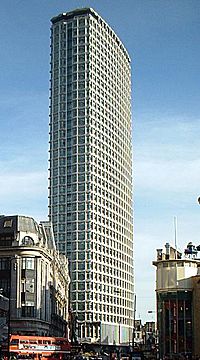
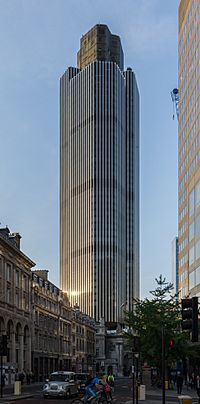
Richard Seifert (born Reubin Seifert, 25 November 1910 – 26 October 2001) was a Swiss-British architect, best known for designing the Centre Point tower and Tower 42 (previously the NatWest Tower), once the tallest building in the City of London. His eponymously named practice – R. Seifert and Partners (later the R. Seifert Company and Partnership) was at its most prolific in the 1960s and 1970s, responsible for many major office buildings in Central London as well as large urban regeneration projects in other major British cities.
Biography
Seifert was born to a Swiss family and came to London when young. He attended the Central Foundation Boys' School and subsequently obtained a scholarship to the Bartlett School of Architecture, graduating in 1933. Seifert served in the Royal Engineers during World War II.
Seifert and his company were responsible for more London buildings than Sir Christopher Wren and designed more than 500 office blocks across the UK and Europe.
National Life Stories conducted an oral history interview (C467/05) with Richard Seifert in 1996 for its Architects Lives' collection held by the British Library.
List of works
London and suburbs
- 90 Long Acre, Westminster
- Barnet House, High Road, Barnet
- Blackfriars Station, Queen Victoria Street, City of London (to be demolished)
- Beagle House, Tower Hamlets
- Britannia Hotel (The Biltmore, Mayfair Hotel), Grosvenor Square, Mayfair
- Centre Point, New Oxford Street, Camden
- Corinthian House, Lansdowne Road, Croydon
- Drapers Gardens, Throgmorton Avenue, City of London (demolished)
- Essoldo Paddington Cinema, Great Western Road, Westminster (demolished)
- Euston Station, Eversholt Street, Camden
- Kings Mall, King Street, Hammersmith 1980
- Kellogg House, Baker Street, Westminster
- Limebank House, Gracechurch Street, City of London (demolished)
- London Penta Hotel (London Forum Hotel), Cromwell Road, Kensington and Chelsea
- London Metropole Hotel, Edgware Road, Westminster
- New Printing House Square, Gray's Inn Road, Camden
- New London Bridge House, 5 London Bridge Street, Southwark (demolished – site now occupied by The News Building)
- No. 1 Croydon (the NLA Tower), Addiscombe Road, Croydon
- One Kemble Street (Space House), off Kingsway, Camden
- 1, 2 & 3 St John’s Square, Finsbury (now known as Gate House, 1 St John's Square, Clerkenwell, Islington)
- Riverside Baths, Erith, Kent (demolished)
- South Bank Tower, Stamford Street, Southwark
- Tolworth Tower, Ewell Road, Tolworth, Kingston upon Thames
- Tower 42, Bishopsgate, City of London
- Wembley Conference Centre, Wembley, Middlesex
Outside London
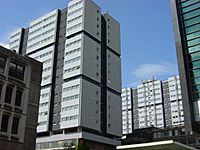
- Alpha Tower, Birmingham
- Anderston Centre, Glasgow (partly demolished)
- Hilton House, Hilton Street, Manchester
- Gateway House, Piccadilly Approach, Manchester (1969)
- Metropole Hotel, Birmingham
- Sussex Heights, Brighton
- Hexagon Tower, Manchester


